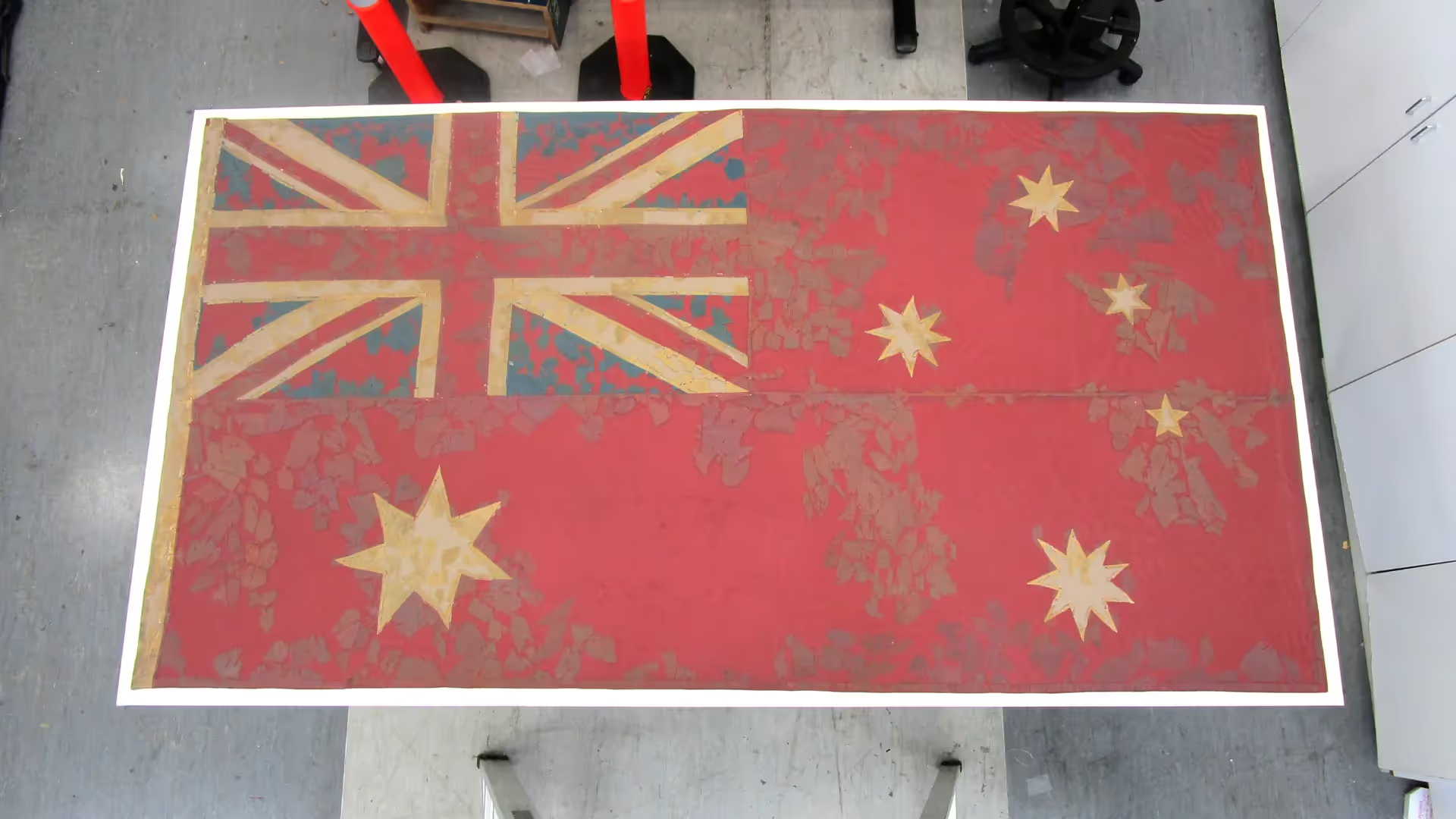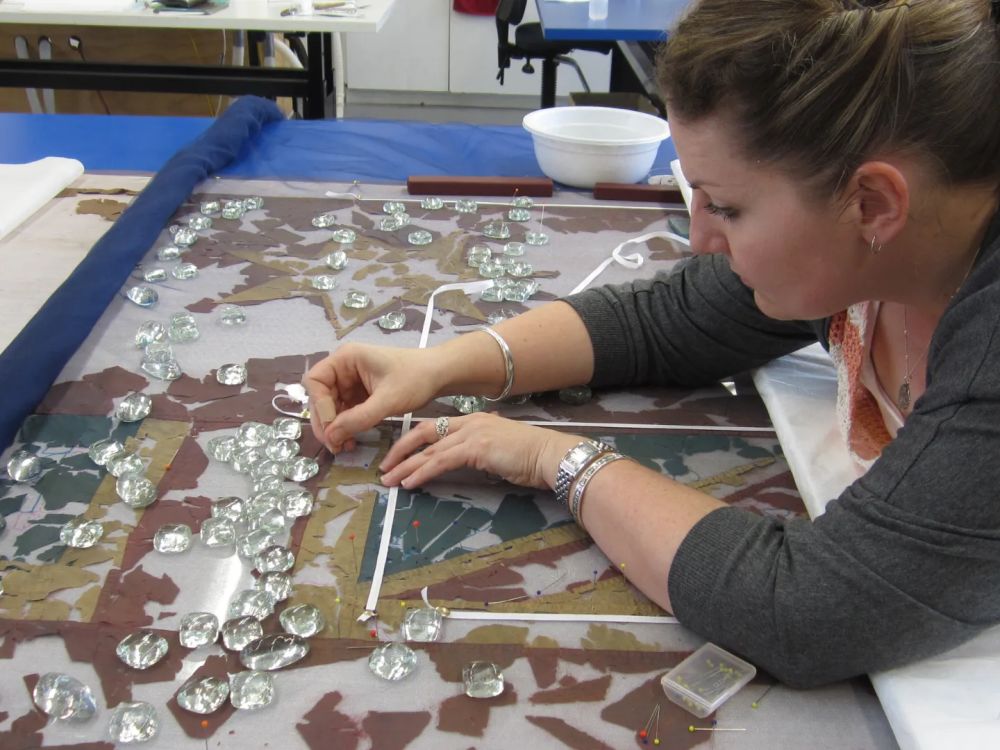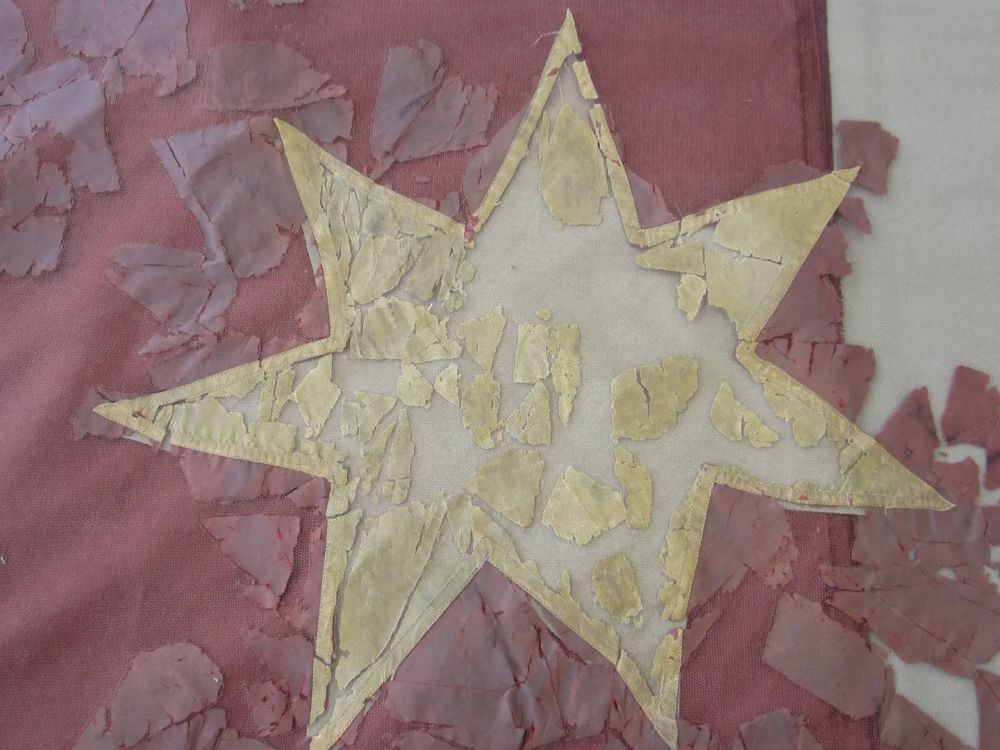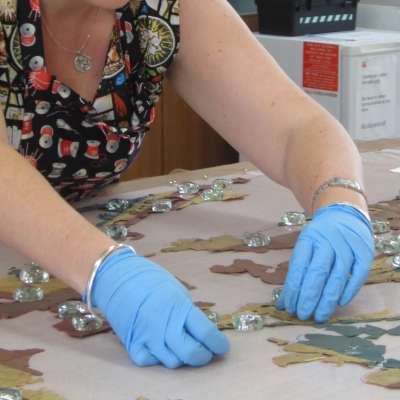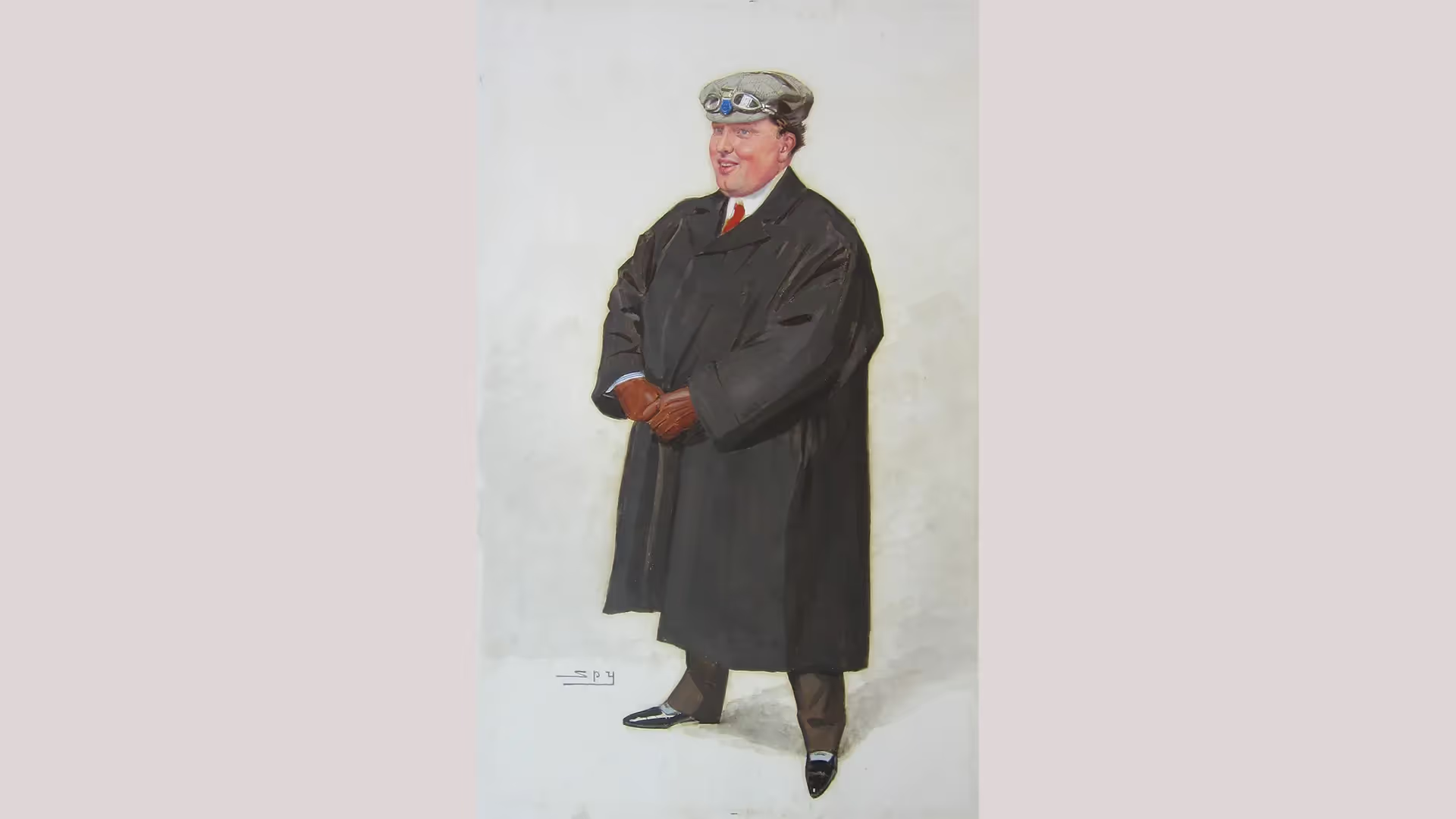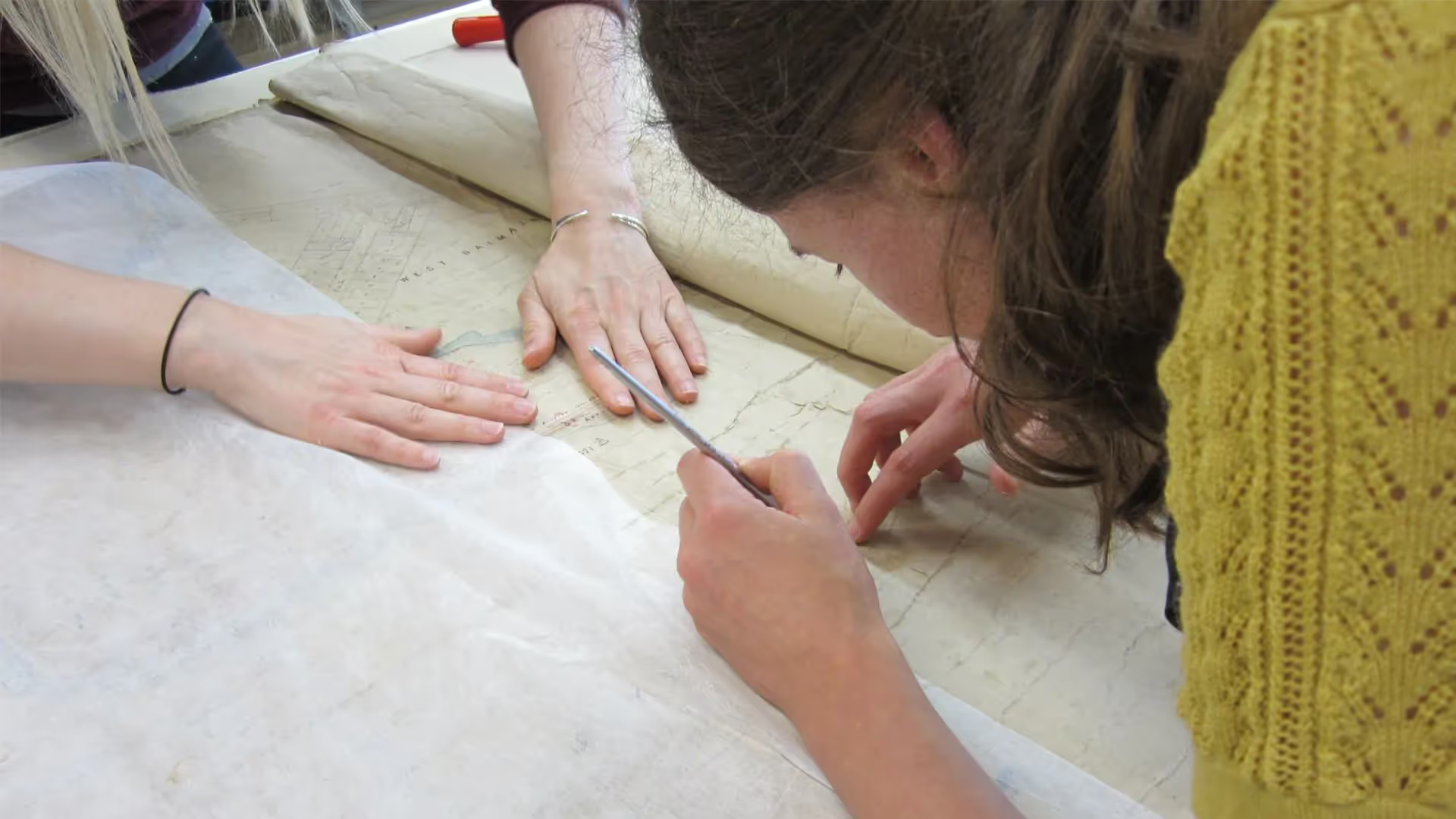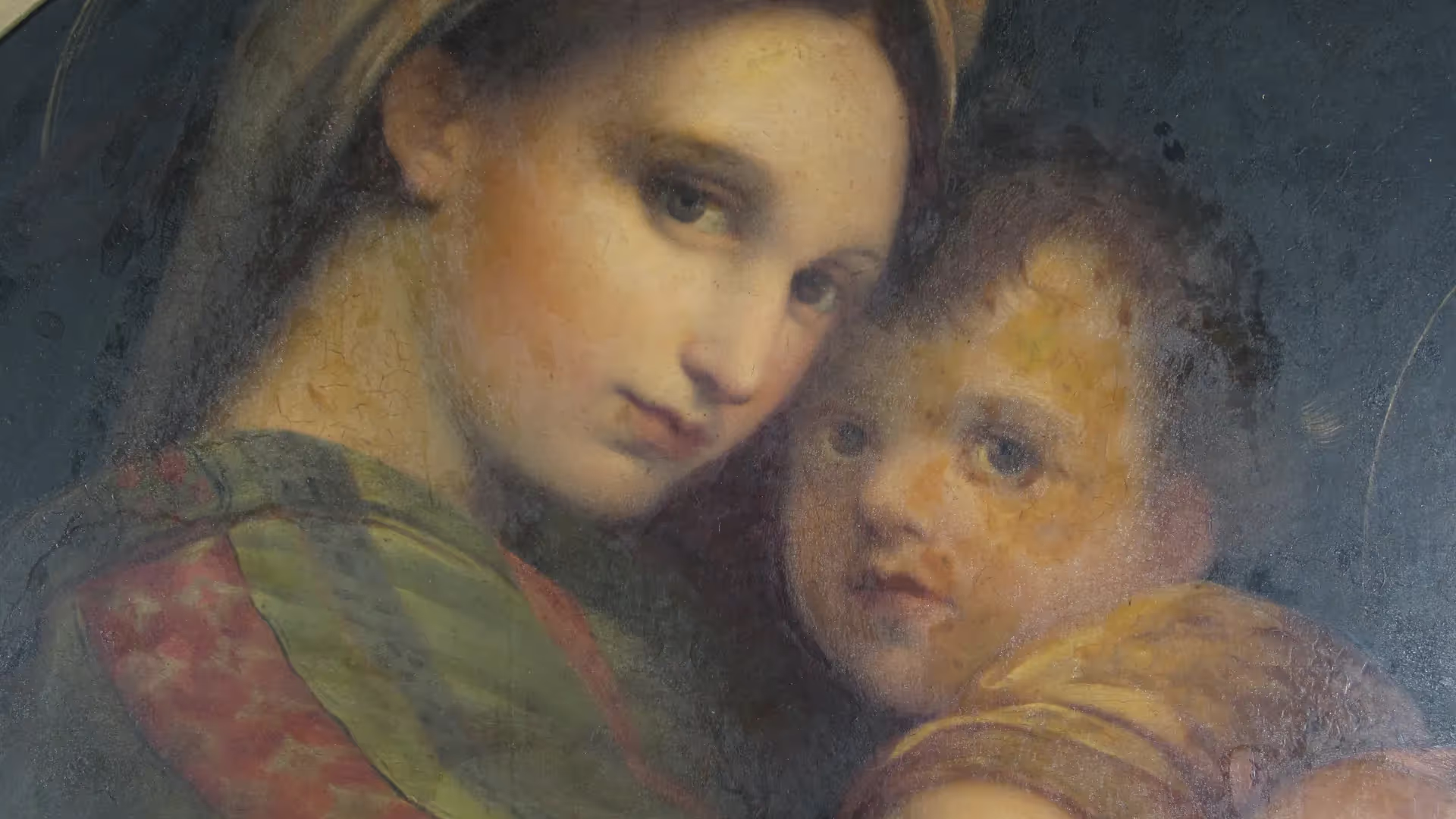Condition
Condition
The Birdwood Flag had deteriorated badly due to age, use and having been ‘laid up’, or hung, within St Michael’s Chapel in Christ Church Cathedral, Newcastle, since 1924.
After 60 years the flag began to disintegrate, gradually falling into small pieces. Many of these pieces were collected by the former Dean, Graeme Lawrence, and stored in a cardboard box at the Cathedral.
The hundreds of fragments – most smaller than 3cm2 – included recognisable portions from seams within the Union Jack, sections of the Hoist Edge, sections of the outer edge seam of the flag, the Commonwealth Star and three of the stars of the Southern Cross. The silk itself was in poor condition, with little remaining strength.
Treatment
A range of alternative approaches to the conservation of the Birdwood Flag were considered, from stabilisation and storing of the fragments, to construction of a reproduction version, to a combination of known and conjectural reconstruction.
Following extensive discussions between stakeholders including the Cathedral, the University of Newcastle, the Birdwood Heritage Committee and ICS – and a program of fundraising by the Birdwood Heritage Committee which included a major grant from the Copland Foundation – work commenced on a known and conjectural reconstruction.
The hundreds of fragments of the Birdwood Flag were painstakingly sorted, cleaned, and humidified (to relax and soften the deteriorated silk fabric in preparation for stitching). The fragments were then laid out into original positions where this was able to be determined, or approximate positions based on the colour of the silk, evidence of seams or other information. The fragments were tacked (stitched) into position between two layers of tulle fabric which is commonly used as lining in the conservation of fragile silk textiles.
A new ensign replicating the original Birdwood Flag was commissioned and attached to a padded backing board. The fragments of the original flag, held between the tulle lining layers, were then laid over the replica ensign and sewn into position.
A protective showcase was commissioned so that the Birdwood Flag can once again be displayed, in turn, at the Cathedral and the University of Newcastle.
Before treatment
After treatment
